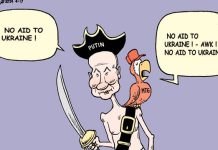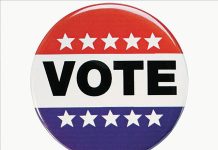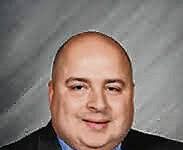Every so often I will see a story or photo in The Republic that triggers a rush of memories. Saturday was such a day when I saw the 50-year Looking Back photo of the slot car tracks at The Camera and Hobby Shop.
Everyone has certain people, events and places that have helped shape their lives. For me, one of those places was the Camera and Hobby Shop.
My family moved into a new home in the 2600 block of Chestnut street in 1965, the same year the Camera and Hobby Shop moved around the corner to its new location in the 25th Street Shopping Center. I was 9 at the time. The location was close enough that I could ride my bike from home to the store without crossing any major streets, so it was a frequent destination.
I loved watching the slot cars and ultimately owned a few. I remember going up to the counter and buying time on the track from Russ Kuhn. He would set the timer on the transformer based on the money I had available to spend, and I would race until my time ran out. I would do extra chores at home in hopes of earning more money to race the following week.
Kuhn and Earl Stam are the two employees who put the tracks together. Not too far into the process, they realized that they would never get done by using regular screwdrivers. They had to find a better way, so they bought an electric screwdriver that plugged into the wall. I bought that screwdriver from the store years after the tracks were gone, and I still have it today, 50 years after the tracks were initially put together.
I don’t imagine that kids today can grasp the concept of buying time in 15-minute chunks to race a small electric car around a track. In my formative years, it was a huge treat to go slot car racing. Today, kids use their smartphones or tablets to drive on a virtual track, where it feels like they are in the driver’s seat at any of a wide variety of race courses around the world.
They will tell you that they can do that for free. What they are missing in their thought process is the cost of the laptop, phone or tablet on which they are dependent for that experience. There is no way that my parents would have considered providing me with a personal device that cost, even in 1965 dollars, what a smartphone or tablet cost today.
Personally, I think today’s youth are missing something by having their virtual race with a person halfway around the world instead of someone sitting on the stool next to them. At The Camera and Hobby Shop, you would race your car around the track hoping that you wouldn’t over-accelerate through the curve, sending the car careening off the track and possibly into an innocent spectator.
I was also into model rockets, and I remember buying my rocket kits and Estes rocket engines at the hobby counter and launching them in the field behind Schmitt Elementary School. What a rush is was to throw the switch on the launcher, see the fuse ignite, watch the rocket shoot skyward, and then see it gently float back to the ground under a plastic parachute.
The impact the Camera and Hobby Shop had on my life would continue for many years. I enjoyed photography but didn’t own my own camera. When I was in eighth grade at Northside Junior High, I was on the Epoch yearbook staff as a photographer, and I really wanted my own camera. My father went with me to the store, and we explored my options.
Earl Stam was the salesman who helped us. We found a camera I liked, a Pentax H1A. The next challenge was how to buy it. Tom Thompson, owner of the store, agreed to extend credit to me, a 13-year-old kid. This was not a layaway. Mr. Thompson opened a credit account for me, and I took the camera home.
After collecting from my paper route at the end of each week, I would stop by the store and make a payment on my camera. It took more than six months to pay it off, but I got it done. How many shop owners today would have enough faith in a teen to extend credit?
When I was in high school in the early 1970s, Mr. Thompson offered me a job at the store. I worked as a salesman but also mopped the floors, washed the windows, took out the trash, stocked the shelves and helped decorate the front window display. I would also help prepare the rolls of film and negatives for the daily pickup by a carrier, who would shuttle photo orders between the store and the Kodak processing lab. When they would arrive back from the lab, we would call customers to let them know they were ready to be picked up.
Yes, I remember when photos used to take days from being taken until the results were seen. What a difference a few decades makes.
One of my favorite extra chores was to change the messages each week on the tall triangle marquee for the shopping center, which was at the intersection of 25th Street and Central Avenue.
Little did I realize at the time the wealth of knowledge and understanding I would glean from my work at the Camera and Hobby Shop. My experiences at the store are what convinced me that everyone should work in a customer-facing environment at some point in their life to fully appreciate what it is like to stand on the other side of the counter. I can’t help but feel that people would treat one another more amicably if everyone had that experience.
I continued to work at the store during the summers of my early college years. As interest in slot car racing waned, the tracks were sold off, hobby supplies were removed as an offering, and the store name was changed to The Camera Shop. Hallmark cards, cameras and other photo supplies were the inventory of the day.
Once again, Mr. Thompson helped build my confidence by having me count the cash register drawer and make the daily deposit at the bank.
As with most individuals, my parents are my personal heroes, and I thank them for shaping my life into what it has become. However, when I look beyond my family influencers, Mr. Thompson and all of the talented individuals with whom I had the pleasure of working at the Camera and Hobby Shop were all key contributors to my life story.
Many thanks to The Republic and the Looking Back photo that triggered such a fond set of memories.
Greg Willmore, who grew up in Columbus and still lives in the city, manages a corporate technical sales support team that works with colleges and universities in the Midwest and northeastern states to incorporate technology in teaching and learning.
Tom Jekel is editor of The Republic. His column appears each Sunday. You may reach him by phone at 379-5665 or by email at [email protected]




